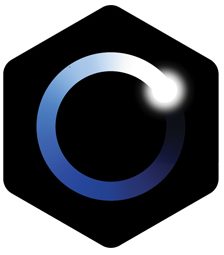The UW community supports research efforts in exoplanet and planetary science and astrobiology, primarily within the Astronomy and Earth and Space Sciences departments. UW is also a leader in interdisciplinary Astrobiology Graduate training, with a vibrant graduate program that spans 11 University of Washington science and engineering departments. Our core research is supported by high-performance computing, laboratory and telescope facilities, and includes:
- understanding the origin and coevolution of early life with its environment,
- the populations, environments and astrobiological potential of Solar System icy worlds and small bodies, including Solar System surveys with the Rubin Observatory
- understanding factors affecting terrestrial exoplanet evolution and habitability
- identifying novel potential biosignatures
- developing statistical frameworks to interpret exoplanetary biosignatures
- developing terrestrial exoplanet models and simulated spectra to analyze JWST TRAPPIST-1 data
- evaluating scientific outcomes, and developing technology, for telescopes that will study exoplanets and search for life beyond the Solar System.
In consultation with a potential UW advisor, 51 Peg b fellows are invited to propose projects that align with or are complementary to our core research. An alphabetical list of potential faculty advisors, their contact information, and their research is given below.
Fellows also have the opportunity to participate in our Astrobiology graduate program, including auditing or guest teaching classes, and participating in, or helping to lead, astrobiology field workshops and other activities. Fellows can also provide mentorship in scientific programing and research for underrepresented undergrad students in our Pre-Major in Astronomy Program.
The 51 Peg b application information and form can be found here. General questions about 51 Peg b opportunities at UW can be directed to Professor Victoria Meadows, who is serving as the Institutional Contact for this Program at the University of Washington (meadows@uw.edu).
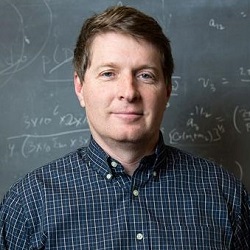
Eric Agol
Professor, Astronomy & UW Astrobiology Faculty
agol@uw.edu
Research Interests: Eric Agol studies transits of extrasolar planets by creating transit modeling codes which have been used to discover and characterize thousands of transiting exoplanets. He helped originate the idea of detecting and characterizing planets using transit timing variations. He is a former member of the Kepler team, with which he led the discovery and characterization of Kepler’s first exoplanet orbiting within the habitable zone which is small enough to plausibly have a rocky composition (Kepler 62f), as well as a closely orbiting super-Earth and mini-Neptune (Kepler 36). He postulated the possibility of long-lived habitable planets around white dwarf stars. He is also interested in atmospheric modeling of hot Jupiters, coronagraphic imaging, radial velocity surveys, and mapping of extrasolar planets (using their time-dependent variation). He is a member of the Virtual Planetary Laboratory and has recently characterized the transiting exoplanets in the TRAPPIST-1 system, providing the tightest constraints on the bulk densities and compositions of any temperate Earth-sized planets external to our Solar system. Current Work Areas: TRAPPIST-1, radius valley, photodynamical modeling, Gaussian Processes

Rory Barnes
Associate Professor, Astronomy & UW Astrobiology Faculty
rkb9@uw.edu
Rory Barnes is a theorist in the Virtual Planetary Laboratory primarily interested in the formation and evolution of habitable planets. He focuses on planets in and around the “habitable zones” of low-mass stars, showing how their composition, orbital oscillations, and tidal processes affect our concept of planetary habitability.
Research Interests: Planetary System Evolution.
Current Work Areas: Tidal evolution of planets and stars; thermal/magnetic/volatile evolution of terrestrial planet interiors; terrestrial planet climates; orbital/rotational evolution of planets; atmospheric escape; galactic influences on planetary systems; stellar evolution; machine learning

David Catling
Professor, Earth and Space Sciences & Astrobiology Faculty
dcatling@uw.edu
David Catling is an astrobiologist and planetary scientist who studies what characteristics of Earth help it support life, and whether what we think of as life might be found on other planets. To this end, he looks at the ways that planetary surfaces and atmospheres develop together, and how life on Earth co-evolved withEarth’s atmosphere. His work spans both a variety of disciplines (astronomy, biology, geology) and planets (Earth, Mars, Venus, and exoplanets). In addition to his extensive scholarly work, he is the author of Astrobiology: A Very Short Introduction, published by Oxford University Press. He is a member of the UW Astrobiology program and the Virtual Planetary Laboratory.
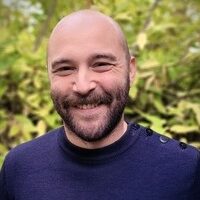
Baptiste Journaux
Research Assistant Professor, Earth and Space Sciences, Astrobiology Faculty
bjournau@uw.edu
Research Interests: Icy ocean worlds, planetary interiors, mineral physics, astrobiology, extreme environments. Baptiste Journaux is a Planetary Scientist/Mineral physicist. He is an assistant research professor at the Department of Earth and Space Sciences. His primary research goal is to identify and characterize the chemical and physical limiting factors for habitability of deep extraterrestrial oceans in icy moons and water-rich exoplanets. To explore the extreme conditions found deep within planets, he uses various high-pressure experimental techniques like diamond anvil cell, Raman spectroscopy, or synchrotron X-Ray diffraction. He is a member of the NASA DragonFly team and NASA Astrobiology Institute Titan team. Current Work Areas: Experimental high pressure properties of oceans and water-rich minerals applied to icy moons; Geophysical inversion of Europa Clipper data; Ocean Exoplanet structure and evolution; Mineralogy of Titan in preparation of the NASA DragonFly mission.
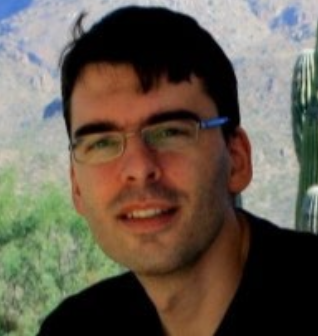
Mario Juric
Professor, Astronomy
mjuric@uw.edu
Research Interests: I’m the Director of UW’s DiRAC (Data-intensive Research in Astrophysics and Cosmology) Institute and the PI of UW’s contribution to the Rubin Observatory. I’m broadly interested in data-intensive astrophysics, survey science, and what we can learn about planetary systems’ history, structure and evolution by studying small bodies of the Solar System (trans-Neptunian objects, asteroids, comets) and interstellar objects. My interests span theory (dynamics and simulations), observations (especially searches for interesting objects), and engineering (software systems and techniques).
Washington. We’re devising algorithms and constructing software that will discover small bodies in Rubin. We expect Rubin to discover 5M+ main-belt asteroids, 100,000+ NEAs, 200,000+ Jupiter Trojans, 40,000+ TNOs, and tens of ISOs (among others), the majority within the first 1-2 years of the survey (starting in 2025). Working in this group would be an excellent environment for Fellows interested in projects such as: searches hitherto unknown planet(s) in the Solar System; mapping the trans- Neptunian population; discovering and understanding the population of ISOs; understanding all small body populations and their implications for planet formation; mapping and understanding the distribution of volatiles
Current Work Areas: I lead the Rubin Observatory Solar System Discovery team, a group situated at the University of throughout the solar system through comets and active asteroids; and — more generally — any area that would benefit from analysis and understanding of Rubin datasets. We engage in and welcome bot observational (discovery, follow-up), theoretical, and methodological (algorithms, software systems) work.
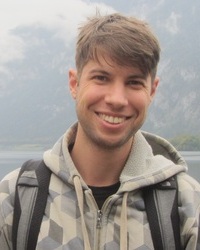
Josh Krissansen-Totton
Assistant Professor, Earth and Space Sciences & Astrobiology Faculty
joshkt@uw.edu
Research Interests: I specialize in modeling the (bio)geochemical evolution of terrestrial planets, including interactions between atmospheres, surfaces, and interiors. My research combines Earth system science, namely models of carbon and oxygen cycling in deep time, with an awareness of astronomical observations to formulate testable hypotheses about terrestrial planet atmospheres and biosignatures. Current Work Areas: Current focus areas include oxygen and methane biosignatures (+ their false positives), ancient Venus habitability, magma ocean volatile evolution, the early Earth’s climate and carbon cycle, exoplanet waterworlds, and preparations for the Habitable Worlds Observatory.
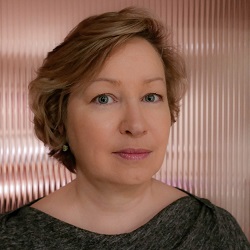
Victoria Meadows
Professor, Astronomy, & Director UW Astrobiology Program, 51 Peg b Institutional Contact
meadows@uw.edu
Victoria Meadows is an astrobiologist and planetary scientist with research spanning both Solar System and small exoplanet targets. She is the Principal Investigator forthe massively interdisciplinary NASA Virtual Planetary Laboratory (VPL) Team, which she founded in 2001 with the goal of developing a scientific foundation for the search for habitability and life beyond the Solar System. Her team uses models of planets, including planet-star interactions, to generate plausible planetary environments and spectra for extrasolar terrestrial planets and the early Earth. These are used to study the Earth as an exoplanet and the impact of star-planet interactions on habitability and biosignatures, and to simulate observables for terrestrial and sub-Neptune exoplanets to guide observing proposals and data analysis of these targets. Dr. Meadows has served on NASA mission concept development teams, and her research is central to developing scientific protocols that optimize the search for signs of habitability and life on terrestrial exoplanets using JWST, ground-based ELTs, and future space-based direct-imaging telescopes. Current work areas: predicting, acquiring and analyzing obervations of the TRAPPIST-1 planets with JWST, preparing for ELT high-resolution spectroscopy of small planets, developing statistical biosignature assessment protocols, and improving our ability to predict and analyze terrestrial exoplanet observations with the Habitable Worlds Observatory.
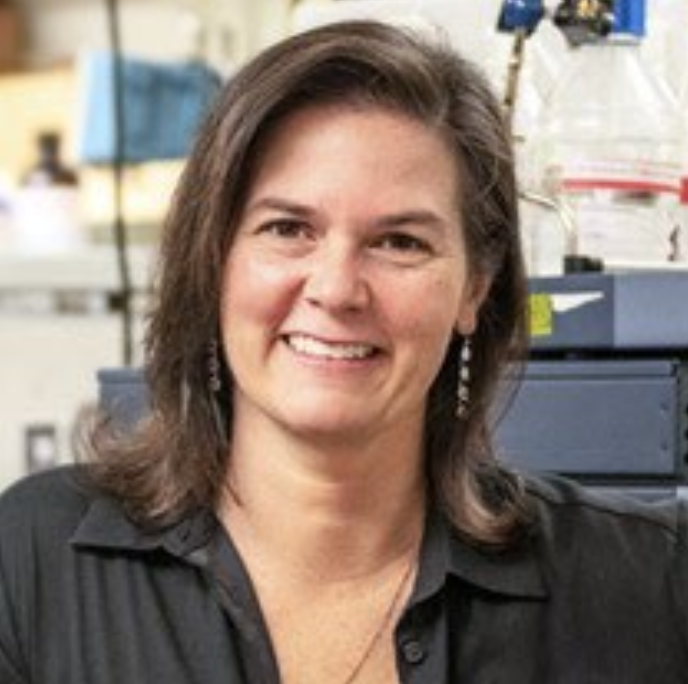
Brook Nunn
Research Associate Professor, Genome Sciences & Astrobiology Faculty
brookh@uw.edu
Research Interests: life detection using peptide analysis on mass spectrometers, extremophiles, metaproteomics.
Brook Nunn is the director of the Environmental Proteomics Center at the University of Washington and is also on the Steering Committee for the NASA Network for Life Detection (NFOLD) Research Coordination Network. While her training is in analytical chemistry, she has focused her recent research on using and developing state-of-the-art tandem mass spectrometry technology to analyze and decipher how organisms or communities of organisms, such as a microbiome, adapt to a changing environment. She collaborates with a range of researchers to explore unique ecosystems such as coral, hydrothermal vents, the open ocean, and microbiomes. She is also a member of the UW Astrobiology program. Current Work Areas: My lab develops methods and techniques to identify peptides and proteins within individual organisms and complex communities (e.g., microbiomes) to understand dominant functions that allow biochemical adaptation to different environmental states or perturbations. We focus on development of MS and MS-bioinformatic methods for detecting and tracking organisms as they go through these adaptations in time course experiments. Extreme environments of interest include ice, ice-brine channels, hydrothermal vents, perchlorates, etc.
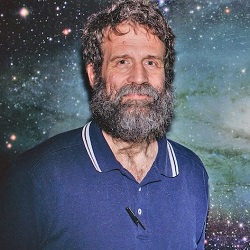
Tom Quinn
Professor and Chair, Astronomy, & Astrobiology Faculty
trq@uw.edu
Tom Quinn leads the N-body shop, where he works on running and analyzing N-body simulations of structure formation in the Universe and planet formation. His other research interests include Galactic and Solar System dynamics. He is a member of the UW Astrobiology program, the Virtual Planetary Laboratory, and the Dark Universe Science Center. Research Interests: Planet formation; Small body dynamics; Stability of Planetary systems.
Current Work Areas: Planet formation; Oort Cloud/Galaxy connection

Sarah Tuttle
Associate Professor, Astronomy, Chair, Astronomy DEI
tuttlese@uw.edu
Sarah Tuttle is primarily an instrumental astrophysicist who dabbles in observations of nearby galaxies. Her work is focused on novel approaches to observing faint and diffuse matter, as well as techniques supporting integral field spectroscopy. Her past work involved using UV spectroscopy to try and detect the intergalactic medium. She was also the instrument scientist for VIRUS – a massively replicated spectrograph currently coming online at McDonald Observatory to detect dark energy at intermediate redshifts. Current Work Areas: novel materials for astronomical gratings and filters, as well as approaches to bring polarimetry (and spectropolarimetry) to small telescopes.

Dale Winebrenner
Professor, Earth and Space Sciences & Astrobiology Faculty
dpw@uw.edu
Dr. Prof. Winebrenner’s research interests center on astrobiological exploration of subglacial seas on Earth and in the outer solar system by means of (1) electromagnetic remote sensing, including sounding radars and optical sensing of organics in ice, as well as (2) observation of Earth-analogs to seas in the outer solar system, specifically Arctic and Antarctic subglacial lakes. He presently leads an engineering and science team to develop and deploy ice melt probes, which provide access to subglacial seas at relatively costs (to terrestrial logistics and to spacecraft resources). Our immediate aim is to investigate how life can operate on Earth beneath kilometers of ice, isolated from the atmosphere and sunlight for millions of years. Such lakes are among the last few unexplored places on Earth, and will critically inform the questions we ask when exploring Europa, Enceladus, and other icy moons. Melt probe technology on Earth is also a precursor to technology for subsurface exploration by landed missions in the outer solar system.

